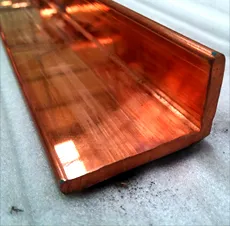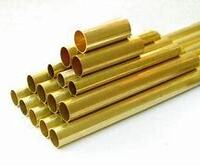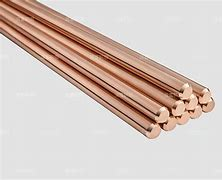1. Introduction
As of April 27, 2024, copper prices hit a 22-month high due to supply disruptions in major mining regions and rising demand for renewable energy infrastructure. This surge has sparked renewed interest in copper recycling—especially among DIYers and small-scale scrappers looking to cash in on copper wire, copper rod, and copper strip scrap. But not all copper is created equal, and improper handling can slash your payout or even violate environmental laws.

Stripping copper wire correctly not only boosts your scrap value but also ensures safety and compliance. In this guide, we’ll show you the best way to strip copper wire—whether it’s thin household cable, thick industrial wiring, or even copper strip wire—without damaging the metal or risking injury.
2. Why Strip Copper Wire?
Unstripped (insulated) copper wire fetches a fraction of the price of clean, bare copper. Scrap yards typically pay 30–50% less for insulated wire because they must process it themselves. By stripping it yourself, you turn low-grade scrap into high-value material like rod copper, copper round bar, or flat copper strip—all of which command premium rates.
Additionally, clean copper is easier to sort and identify. You’ll avoid confusion between copper alloy strip, nickel plated copper strip, or beryllium copper strip, which may have different market values.
3. Tools You’ll Need
- Wire strippers (manual or automatic)
- Utility knife or razor blade (for thick insulation)
- Heat gun (optional, for stubborn insulation)
- Safety gloves and eye protection
- Bucket or container for sorted copper
Avoid using open flames or burning copper wire for scrap—it’s illegal in most areas, releases toxic fumes, and oxidizes the copper, reducing its value.

4. Step-by-Step: How to Strip Copper Wire Safely and Efficiently
4.1. Sort Your Wire First
Separate your copper by type: THHN building wire, coaxial cable, motor windings, or copper strip wire. High-purity types like bare #6 copper wire or copper earth strip 25x3mm are especially valuable. Also, identify if you have copper rod for welding or copper brazing rod—these may be worth selling intact rather than stripping.
4.2. Use Manual Wire Strippers for Thin Cables
For standard household wiring (14–10 AWG), use adjustable wire strippers. Clamp the tool at the end of the insulation, twist gently, and pull off the plastic sheath. This is the best way to strip copper wire without nicking the conductor.
4.3. Strip Thick or Armored Cables with a Knife

For thick copper cable (like 2/0 or 4/0), carefully score the insulation with a utility knife, then peel it back. Work slowly to avoid cutting into the copper strands. This method works well for stripping copper wire for scrap from industrial sources.
4.4. Use a Corded or Battery-Powered Wire Stripper for Volume
If you’re processing long copper wire or large batches, invest in an automatic wire stripper. These machines can handle multiple gauges and dramatically speed up the process—ideal for stripping wire for recycling at scale.
4.5. Handle Copper Strip and Flat Stock Separately
Don’t confuse copper strip with insulated wire. Items like copper roof strip, copper edging strip, or 1mm copper strip are already bare metal. Clean them of dirt or solder, and bundle them separately. A roll of copper strip or copper strip roll can fetch top dollar if kept uncontaminated.
5. What NOT to Do When Stripping Copper
Never burn copper wire for scrap. Burning releases dioxins and leaves a black oxide layer that lowers copper purity. Most scrap yards reject burned copper outright.
Avoid using chemical strippers unless you’re trained—they can corrode the copper or pose health risks. Stick to mechanical methods for safety and value preservation.
6. Maximizing Your Scrap Value
Once stripped, sort your copper into categories:
- Bare bright copper (shiny, unoxidized strands)
- #1 copper (clean pipe, bus bar, or copper flat bar)
- #2 copper (tarnished or soldered, like old copper tubing or copper pipe fittings)
Items like copper bonded ground rod, copper clad steel earth rod, or copper bonded earthing rod contain steel cores—these are not pure copper and should be separated. Similarly, copper pipework or aircon copper pipe should be cleaned and sold as copper tube, not mixed with wire scrap.
Check local scrap yards for copper rod price, copper strip price, or earthing rod price before selling. Prices vary by region—search ‘copper strip near me’ to compare rates.
7. Conclusion
Stripping copper wire for scrap is a smart way to capitalize on today’s high copper prices—but only if done correctly. By using the right tools, avoiding burning, and sorting your materials (from copper welding rod to flexible copper bus bar), you’ll maximize returns and stay compliant. Whether you’re salvaging from old appliances, construction sites, or HVAC systems, clean, bare copper always wins at the scrap yard.
Our Website founded on October 17, 2012, is a high-tech enterprise committed to the research and development, production, processing, sales and technical services of ceramic relative materials such as How. Our products includes but not limited to Boron Carbide Ceramic Products, Boron Nitride Ceramic Products, Silicon Carbide Ceramic Products, Silicon Nitride Ceramic Products, Zirconium Dioxide Ceramic Products, etc. If you are interested, please feel free to contact us.

